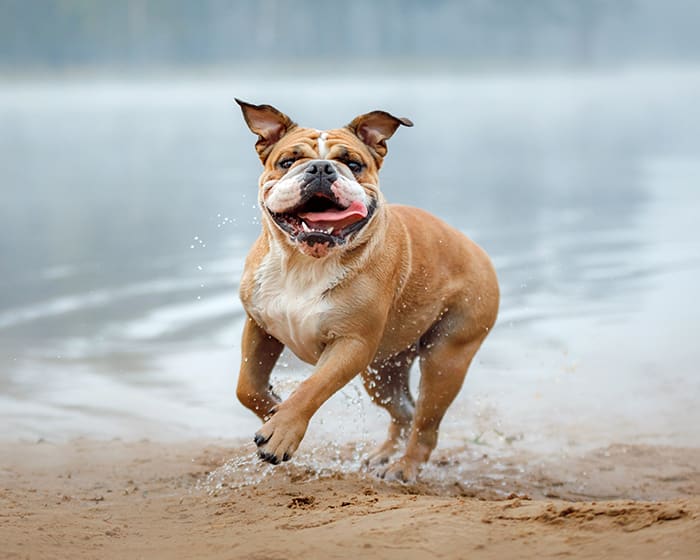Our dedicated veterinarians perform scheduled and emergency C-sections for dogs and cats in Ceres. This major surgery is for pets who will not be able to give birth safely through natural means.
What is a Veterinary C-Section?
A C-section (or cesarean) involves the removal of puppies or kittens from the uterus of a dog or cat.
This major surgery is often performed in emergency cases where an animal will not be able to give birth safely by natural means. Your pregnant pet should receive regular physical exams from his or her veterinarian, and be closely monitored leading up to the birth or C-section procedure.
Recovery from a veterinary C-section is typically quick and complications are rare. Our vets can provide advice, expertise and guidance about caring for your cat or dog before and after her C-section.

Preparing for a C-Section
If you can do so safely, consider bathing your pet in the days before surgery. It may be a while until you are able to do so again following the procedure. Bathing your pet before the surgery also means that she will already be clean for the surgery itself, and once she starts to care for her new kittens or puppies.
Though your pet may eat the night before the C-section, she should not eat on the morning of the procedure. Water is okay right up until the appointment, as are any medications your pet needs to take along with a small amount of food to encourage her to take it. In the week leading up to the surgery, discontinue using any topical tick or flea products.
Your vet will provide specific instructions for pre-operation well before the procedure.
C-Section FAQs
- Why does my pet need a c-section?
For cats and dogs, C-sections are usually done in emergency situations when the animal has been laboring for too long, or will otherwise be unable to give birth naturally.
- Are there any risks associated with c-sections?
Though complications as a result of C-sections are rare, there are always risks involved with surgery. Potential complications may include:
- Pyometra: Uterine infection
- Mastitis
- Post-operative hemorrhaging
- Anesthetic death
- Infection
- What can I expect during the immediate recovery period?
Shortly after the surgery, anesthesia should wear off. By the time most dogs or cats return home, they will have fully recovered from the effects of the anesthetic. However, it is possible that recovery may take up to 6 hours.
During this recovery period, watch over your pet closely to ensure she does not hurt herself or her puppies by rolling over or falling down. Check that she is fully aware and alert, has started to actively care for her new babies, and is able to stand without help before leaving her alone.
Within the first few hours of returning home, mom should begin eating. Ensure she only eats and drinks a small amount of food or water at a time, but offer them to her in 15-minute or half-hour intervals for the first 24 hours post-surgery. If she eats or drinks too much, she could vomit.
During their nursing period, your dog or cat will need lots of food. For the first week after surgery, she will need around one-and-a-half times her normal amount of food. Make sure to feed her higher quality food, too, in order to give her and her new babies enough nutrition.
Home Care After a C-Section
After a cat or dog C-section, watch mom and her babies closely for the first 24 hours to make sure the babies are safe.
You will need to stay up overnight and place the kittens or puppies on your pet's teats to ensure they feed. This will also help mom's natural hormones kick in and encourage her mothering instincts.
You should also make sure the mother and newborns are kept in a warm, dry environment - ideally with lots of towels and a source of warmth that is safe for them to be around. Replace towels as they become wet.
Since new mothers need up to 3 times their regular amounts of food and water to produce milk for their children, ensure both of these are always available.
Monitor the mother's surgical wound for signs of infection such as swelling or redness, and make sure the area remains clean.
Keeping all bedding clean and checking umbilical cords for redness or swelling will also reduce the risk of infection.
New Patients Always Welcome
American Pet Clinic is accepting new patients! Get in touch today to book your pet's first appointment.
